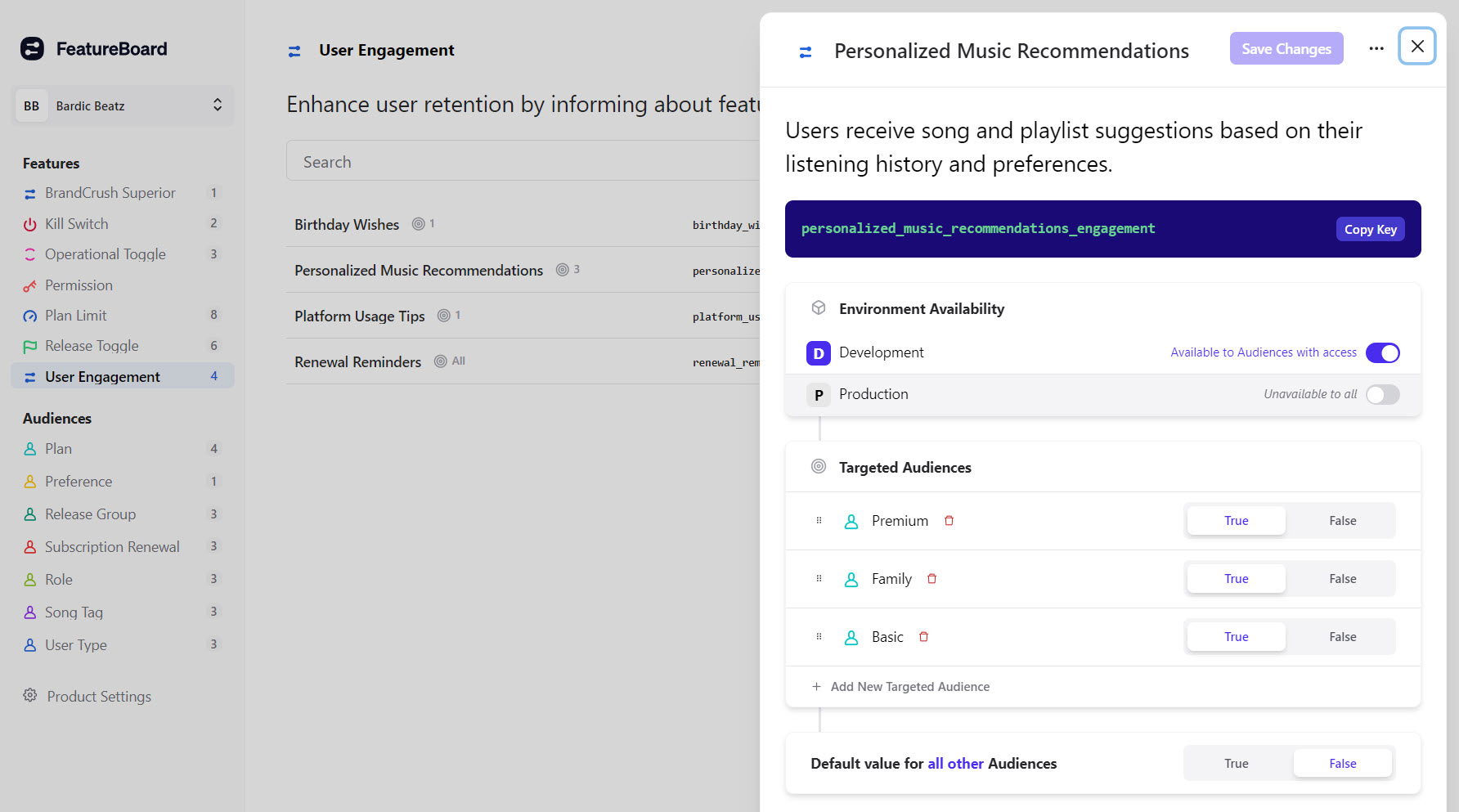Simplifying Feature Management at DDD Adelaide
I had an absolute blast attending DDD Adelaide recently! It's always great to be part of a community where developers come together to share ideas,...

In today's fast-paced digital landscape, agility in product development is crucial. Agile methodologies allow teams to adapt and respond quickly to changes, user feedback, and emerging trends. FeatureBoard enhances this agility by enabling product managers and teams to make real-time updates and adjustments to features without the need for extensive coding or deployment cycles. This means that if users express a need for a new functionality or an improvement, teams can quickly iterate on these requests, ensuring the product remains relevant and competitive.
FeatureBoard gives product managers the power to update and test new parts of their apps without needing developers to change the code. For example, a product manager can decide to release a new "dark mode" feature to a small group of users to see how they like it, all by themselves. This makes it quicker to try new things and make sure users are happy, without waiting for the tech team to make each change.
Separating feature management responsibility from software development empowers both the product owner and the programmer.
In traditional development models, the process of launching and managing new features often requires extensive coordination between product managers and development teams. This can lead to significant delays, as changes in strategy or user feedback necessitate code adjustments and redeployments. In traditional development, launching a feature like a new user interface can require extensive coordination. For instance, product managers must first communicate the concept to developers, who then code and test the feature. Following this, the feature goes through several rounds of reviews and possibly revisions based on feedback. This process can be time-consuming, as each step needs clear communication and approval, delaying the feature's availability to users and the market's response to it.

Take charge of features such as personalized music recommendation access easily
Additionally, this tight coupling between development and feature management can stifle the flexibility and speed required to respond to market shifts, ultimately impacting the product's ability to meet user needs effectively and efficiently. This model contrasts sharply with more agile approaches, where quick iterations and responsiveness are key.
FeatureBoard lets product managers quickly update and test new app features themselves. Imagine a product manager who sees users struggling with navigation. Traditionally, changing the navigation would involve back-and-forth with developers, taking weeks. With FeatureBoard, the developer deploys the code, and then the product manager can directly test a new navigation layout with some users, gathering feedback quickly. This direct control speeds up improvements and ensures the product evolves closely with user needs, highlighting the importance of product ownership in responding to user feedback effectively.

Create new feature categories to manage how users and audiences interact with features
Responsive development goes hand in hand with agile practices, focusing on rapid reaction to user demands and market changes. With FeatureBoard, this responsiveness is elevated as it allows for immediate deployment of features and experiments. This capability is vital in a world where user preferences and technological advancements evolve swiftly. By providing a platform that supports quick decision-making and implementation, FeatureBoard ensures that businesses can keep pace with the digital economy's demands.
The combination of agile and responsive development facilitated by FeatureBoard means that product teams are not just reacting to changes but are proactively experimenting with new ideas and features. This proactive stance on development encourages innovation and continuous improvement, ensuring that the product not only meets current user expectations but also anticipates future needs. In essence, FeatureBoard's support for agile and responsive development strategies is a cornerstone for businesses aiming to thrive in an ever-changing digital environment.
By allowing product managers to directly implement and test new features without the immediate need for developer intervention, it opens up a new realm of experimentation and rapid iteration. This means product managers can swiftly respond to user feedback or market trends by adjusting features, while developers can concentrate on more complex tasks and technical improvements. This collaborative environment not only speeds up the product development cycle but also ensures that both technical and non-technical team members are aligned on the product vision and user needs. For instance, if user data suggests that a particular feature is not engaging users as expected, product managers can quickly set up variants of this feature in FeatureBoard. They can then analyse which variant performs better, all without needing to write code or deploy new versions of the app.
This streamlined process reduces misunderstandings and miscommunications, as both sides can see the impact of changes in real-time. Developers gain insights into how their work supports the product's overall strategy, while product managers develop a better understanding of the technical possibilities and constraints. This mutual understanding fosters a culture of innovation, where ideas can be tested and implemented swiftly, ensuring the product remains dynamic and competitive.
To continue your journey with FeatureBoard and unlock its full potential, consider booking a 1:1 demo. This personalized session will provide you with an in-depth understanding of how FeatureBoard can specifically benefit your projects, allowing you to ask questions and get tailored advice. Visit the FeatureBoard website to find more resources and schedule your demo.

I had an absolute blast attending DDD Adelaide recently! It's always great to be part of a community where developers come together to share ideas,...

The culture around feature flagging is something important to myself and the team, but if you are starting on the journey it can be hard to get...

Feature gating is something most applications probably do, even if patterns are not formalised. Some typical examples: